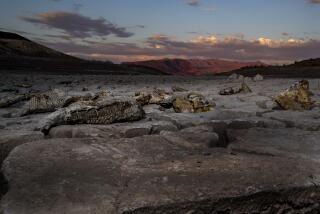The landscape of the U.S. could be part of its climate solution
This year, as storms have battered the East and fires have engulfed the West, the specter of climate change has grown impossible to ignore. Keeping it at bay will require swift and sweeping action to transition away from fossil fuels, as the Intergovernmental Panel on Climate Change reminded the world last month in a sobering new report.
But part of the solution also lies in the ground beneath our feet.
According to a new national study published in the journal Science Advances, managing the American landscape more wisely could store enough carbon to offset up to 21% of current U.S. greenhouse gas emissions. That’s equivalent to closing all of the country’s coal-fired power plants.
A global assessment, published last year and authored by many of the same scientists, found that “natural climate solutions” involving better land stewardship, conservation, and restoration could accomplish more than a third of the emissions reductions needed by the year 2030 to limit total warming to 2 degrees Celsius or less.
“There’s no one silver bullet,” said Joseph Fargione, an ecologist at the Nature Conservancy and the lead author of the U.S. study. “The question is, can natural climate solutions help buy you time so that you don’t blow past warming targets?”
Although it gets less attention than cars and coal, land factors prominently into the climate change equation. Agriculture, deforestation, and other land uses account for roughly a quarter of anthropogenic greenhouse gas emissions. However, plants and soils also absorb enough carbon to compensate for about 20% of what humans add to the atmosphere.
Virtually every conceivable pathway for meeting international climate goals requires sucking even more carbon dioxide out of the atmosphere. And boosting the buffering capacity of the landscape has to be part of that plan, said Katharine Mach, a climate scientist at Stanford University who was not involved in the study. “Land is totally central to climate responses, and we absolutely can’t get around that.”
Plus, Fargione pointed out, humans already know how to implement many natural climate solutions.
“They are available now and proven,” he said.
In the study, Fargione’s team assessed a variety of natural climate solutions and highlighted the most promising candidates for the U.S.
For maximum carbon storage potential, reforestation rose to the top. Researchers found that, if you combined all the land across the country that used to have trees on it but doesn’t now, it would almost rival the size of Texas. Replanting those areas could remove up to 300 million tons of carbon dioxide from the atmosphere — about 5% of the nation’s net emissions.
The biggest bang for the buck, however, came from encouraging private landowners to harvest trees less often, and incentivizing farmers to plant cover crops between growing seasons, which helps trap carbon in the soil. The study concluded that these efforts could have a significant effect even at a price of $10 per ton of CO2 avoided — the going rate for offsets in California’s cap-and-trade program. And they could prevent the equivalent of more than 150 million tons of carbon dioxide emissions.
The U.S. could prevent almost the same amount of future emissions by not doing other things to the land, Fargione’s team found. Under business-as-usual scenarios, researchers project that the U.S. will lose more of its forests, primarily to development, and much of its remaining grasslands, primarily for growing food and biofuels. Avoiding these changes would prevent a large burp of greenhouse gases that would then have to be offset some other way.
Natural climate solutions already play a major role in California’s climate program, where forests account for the majority of offset credits issued so far.
But making real gains with natural climate solutions is easier said than done.
For one thing, limiting an activity like logging in one place may simply cause it to happen somewhere else, said Greg Latta, a forest economist at the University of Idaho who was not involved in the study. “When you reduce harvests on forests, you produce less forest products, the price goes up,” he said.
To see real benefits, Latta said, everyone has to get on board.
And there is no getting away from the fact that land is a finite resource that’s under high demand, Stanford’s Mach said. Humans rely on the landscape for food, shelter, income and recreation. “You’re never going to look at land and have carbon be the first priority,” she said.
Fargione’s team identified many measures that could represent win-win situations. For instance, many farmers have adopted cover crops because they increase soil health and water retention. Restoring tidal wetlands would store carbon while guarding coastal communities from flooding. And managing forests to reduce fire risk helps protect people and communities — along with the carbon that’s built up in trees and soils.
But therein lies the danger of natural climate solutions: that they could someday become a liability.
“If we head into a future where we don’t decarbonize the energy system but we pile up carbon on the landscape, there are real permanence risks,” Mach said.
Wildfires could burn up forest carbon, she said. And there could come a time when farmers can’t feed the world’s growing population on existing farmland, and countries would have to bring conserved land into agricultural production.
That’s why Fargione sees natural climate solutions as a stop-gap while the world makes a rapid transition to clean energy.
“If we don’t do this, we really run the risk of crossing some thresholds and having much greater damage,” Fargione said.
“It’s not really optional.”
Twitter: @ScienceJulia







